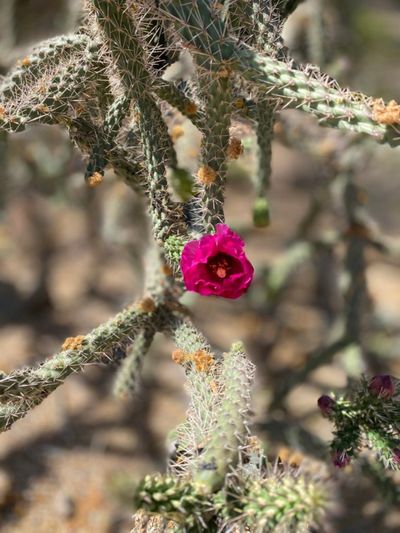Walking Stick Cholla Info
Ever tried growing a cholla cactus in your landscape? There are more than 20 unique varieties of cholla with the walking stick being one of the more memorable. The walking stick cactus (Opuntia imbricata) is a truly interesting plant that is perfect for arid regions. It is found growing wild in Oklahoma, Arizona, New Mexico, Texas, Kansas, and Colorado with a population also well established in northern Mexico. The plant has jointed stems covered in spines that grow upward. In its native habit, this cholla is considered a weedy pest, colonizing rangelands and establishing quickly from dropped jointed stems. Wild plants reproduce themselves by dropped vegetation which quickly roots and forms new plants. They also produce numerous animal-strewn seeds in the fruits. Walking stick cholla info wouldn’t be complete without mention of its place as food and medicine traditionally. Stems and fruit were eaten by indigenous populations and the plant was also used to treat earaches and boils. The hollow spines can be used as needles and the fruit is used to dye textiles. The common name comes from the use of its dried stems as walking sticks. These spiny stems dry out and leave behind an interesting skeleton, still adorned with long spines which can make walking stick cholla care quite painful.
Growing a Cholla Cactus
Walking stick chollas are perennial plants that may have life spans of up to 20 years. They can grow 3 to 5 feet (1-1.5 m.) tall with a slightly wider spread. The plant gets a short but thick, woody trunk and stubby, jointed arms covered in bumps. The finger-piercing spines are long and very wicked in red or pink. Vibrant magenta flowers are at the ends of the oldest stems and develop into green fruit that ripens to red and finally yellow. Bloom time is late spring. Fruits are persistent for months, probably because they have little nutritive value. Animals will feed upon them if preferred food is scarce. These plants grow in dry, well-draining soil with a pH of 6 to 7.5 in a full sun location. Once established in an ideal site, caring for walking stick chollas is not challenging, as they are fairly self-sufficient plants.
Walking Stick Cholla Care
A full sun location is necessary. The plant won’t bloom in areas with inadequate light. You can grow the plant indoors or in sandy or gravelly soil outside in warm regions. The ease with which the plant can reproduce may become an issue. Dropped fruit or even stem pieces will very rapidly become new plants that can invade your garden. In the wild, it is estimated that thick stands establish 330 feet (100.5 m.) from the parent plant in a mere 4 years. Remove the fruit before it matures to prevent the seed from spreading. Prune the plant as necessary to keep it in a minimal or tidy habit; just remember to wear thick gloves. Choose your site wisely when planting this thorny beauty too. Those spines do not make friendly additions to a pathway or around a patio.
